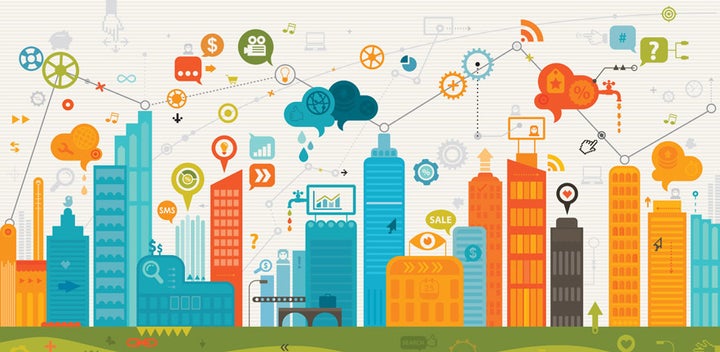
The evolution of connected technology and its impact on our society is truly amazing. From smartphones and tablets to thermostats and home appliances connected devices have begun to generate a seemingly endless stream of real-time data and information. This evolution, however, has barely just begun.
The emergence of the smart city will forever alter civic society and deliver incredible consumer benefits. Smart cities are the high-tech hubs of tomorrow that will leverage connectivity to change the way we live, learn, work, and play. The convergence of connectivity and city planning will improve healthcare, transportation, waste management, air quality, small business opportunities, and so much more. The result: cities that are more inclusive, accessible, safer, and efficiently run.
Already we’re seeing projects working toward the goal of creating these advanced 21st century ecosystems. New York City, for example, has partnered with New York University’s School of Engineering to develop and operate a hub for virtual reality and augmented reality. One focus of the lab will be to foster technology that can transform city buildings into more responsive and connected structures.
These initiatives are important building blocks. But notably, a mayor or city manager can’t just flip a switch to transform his or her city into a smart city. That’s because all that sophisticated, next-generation technology that will improve quality of life and city operations has to be supported by modern digital infrastructure.
Today’s 4G (fourth-generation) networks will not be able to support the massive data demands of a connected smart city. That’s why all eyes are on 5G (fifth-generation) networks. These networks are being designed and built to handle significantly more capacity, higher speed, and lower latency. If you think about the demands and needs of a population living in a modern city, those characteristics will be critical to seamless and successful operations. Advanced applications will need to transmit huge volumes of data not only from machine to machine but also from machines to customers (citizens). If city residents are to adapt these new applications, they will need and expect to experience these innovations in near real-time fashion.
Building these next-generation networks in the U.S. will require close cooperation between cities, private industries and other stakeholders to reduce barriers to deployment. Infrastructure investment is incredibly time and capital intensive, so cities across the U.S. will need to help ensure that networks are being built in a timely, efficient, and economic manner. This can happen in two ways.
The first is establishing the right policy frameworks at all levels of government. Next-generation communities will rely on a broad network of “small cells” – coffee-can sized radio antennas – attached to buildings and hard infrastructure throughout cities to build dense, reliable, and resilient networks. This equipment will enable the transmission of data signals to foster advanced communications and the creation of wide-reaching networks. But in order to allow development and implementation of this infrastructure, we’ll need to modernize aging infrastructure and infrastructure policy.
This can start at the federal level where frameworks are developed that will help guide state and local leaders as they draw up and implement policies specific to their infrastructure needs. This could include options like establishing reasonable fee structures for pole attachments, setting deadlines for application reviews, and streamlining permitting for access to public rights-of-way, all issues identified in an Accenture report released earlier this year. This is the level of detail and guidance that will create more timely and widespread investments in infrastructure – an outcome any consumer or small business owner can support.
Second, cities must prioritize cultivation and expansion of public-private partnerships. These partnerships will provide the investment and capital needed to deploy the right infrastructure and other supporting smart city initiatives. New forms of partnerships between private industry and public agencies will be another essential piece of the puzzle, and visionary cities in the U.S. are already starting the process.
Columbus, last year’s winner of the Department of Transportation’s “Smart City Challenge,” received $40 million in federal grant money and an additional $10 million from Seattle-based Vulcan, Inc., to begin its transformation. The developments so far are impressive. With this public-private support, Columbus is already close to finalizing advancements like autonomous public transportation, advanced street lighting, and community safety improvements including data exchanges that help reduce and ultimately avoid potential human-bus collisions.
Several city leaders recently gathered in Washington, D.C., for “Smart Cities Week” to talk about best practices around advancing urban development, and notably discussions continued circling back to both the importance of public-private partnerships and modern infrastructure policy. These are important conversations to have, and they’ve been happening all over the country as local, state, and federal leaders recognize the benefits of transforming America’s cities and doing so quickly.
Our cities are on the cusp of a digital revolution that will forever change society. And with the right best practices in place, we’ll usher in a whole new era of living.
Matt Weinberg is a former White House appointee with the U.S. Small Business Administration, where he served as a senior adviser in the Office of Investment and Innovation.
